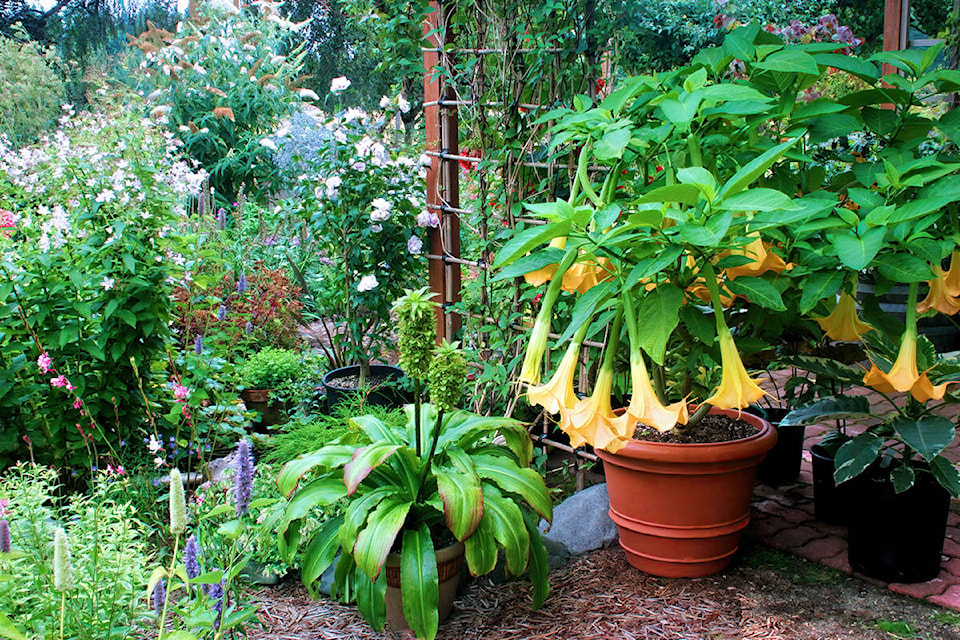By Leslie Cox
Special to The Record
Now that fall is officially here, it is time to start cleaning up and preparing the garden for winter. Especially when I check my weather records and see our first frost, in Black Creek, was on Oct. 22 last year. Only a month away and so much to do!
Watering: Even though the rains seem to be starting, thankfully, do keep on with this chore. It is especially important for your shrubs and trees. We may get an inch (2.5 cm) of rain but if you dig in the garden, likely it is still dry two inches (five cm) down. Certainly not wet enough to satisfy a tree’s moisture requirements.
While the plants may look refreshed from their shower, their roots are still desperate for more water. Your shrubs and trees need sufficient moisture heading into their dormancy period in order to withstand the rigours of winter.
Dead-heading: There are two trains of thought over this chore. Do you aim for tidy plants and garden or do you leave the seeds for the birds? In my garden, the birds always win. There are many species who are feasting to build their reserves for either a long migration or a cold winter spent here.
But birds do not restrict themselves solely to seeds. They also gobble up insects. There are pest larvae present in numbers right now, soon to drop to the ground to pupate over the winter. Fall webworms, those black-faced orange caterpillars, for example.
Once the birds have depleted the seeds, and if the weather allows, that is when I will get busy on my dead-heading. But I leave some plant material in the garden for beneficial insects to use for their hibernation needs. Female swallowtails, for instance, lay their eggs in hollow stems of plants like lovage and fennel, where they are protected through the winter.
Plant protection: If you have placed your houseplants outside for the summer, bring them in now! But check them over carefully before they cross the threshold, and treat with a blast of soapy water if you spot any pest bugs on them. Aim to bring your houseplants back inside a few days before you have to turn the heat on.
Next, dig up cannas, eucomis (pineapple lily), dahlias, and other tender bulb plants. Cut stems off and clean bulbs or tubers thoroughly. Cleanliness ensures successful storage, but be sure to store each species as per its preferences.
Look to your roses, clematis, and young trees. Are they adequately staked or tied against wind damage? The wind gusts the other day should have shown you which plants need some supporting.
It is not the ideal time to prune back roses, but I cut the taller branches off my ‘Abraham Darby’ once the cold weather is assuredly sticking around. Why now? Have you ever laid in bed and listened to rose thorns scratch across your window? Think fingers on a blackboard and I rest my case. Luckily, I get away with pruning out-of-season because this rose is on the protected side of the house and underneath the eave.
Have you planted your garlic yet? Don’t delay too long. I try to plant my garlic bulbs the week following the autumnal equinox but I know some gardeners plant theirs as late as Hallowe’en. Sheesh. The things you can get away with in a Zone 8 garden versus one in Zone 7a.
And don’t forget to get those tulip and daffodil bulbs in the ground. You will be glad you did come spring!
You can find more garden chore info for September and October on my website (duchessofdirt.ca) under “Gardening Info.”
Leslie Cox co-owns Growing Concern Cottage Garden in Black Creek. Her website is at www.duchessofdirt.ca
Also:DUCHESS OF DIRT - Plant and disease species travelling around the world
